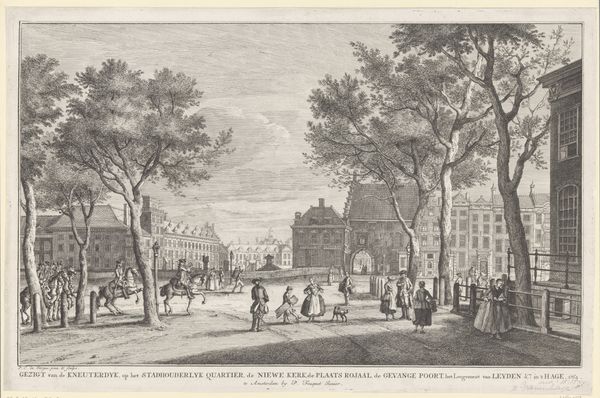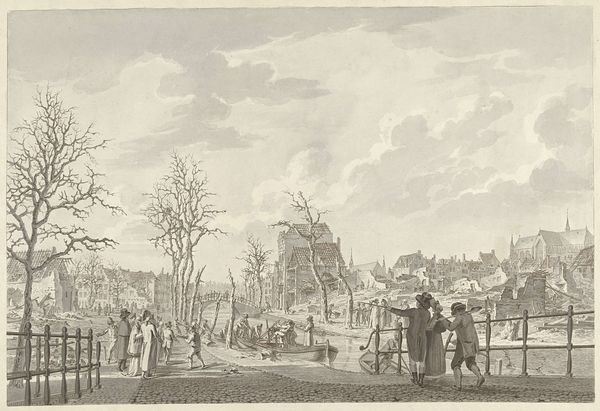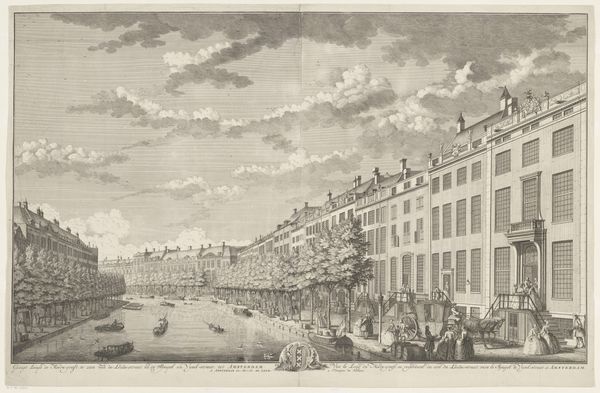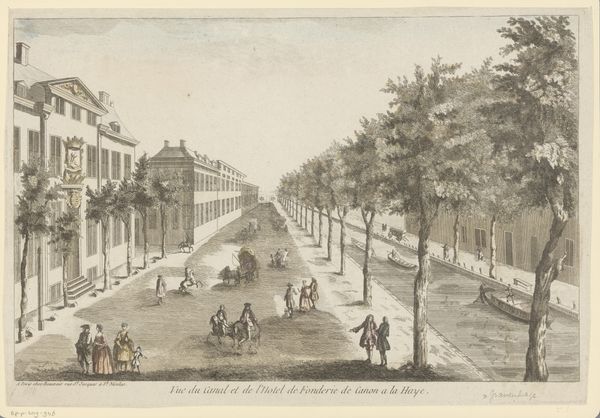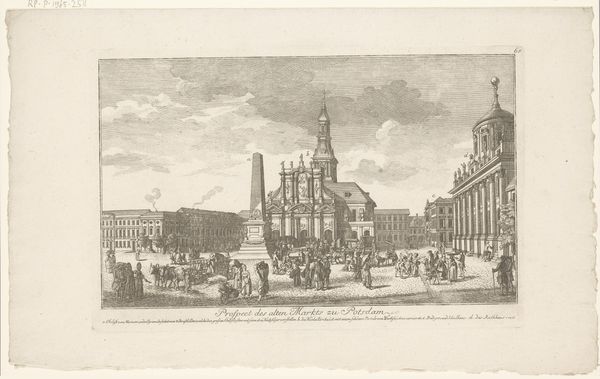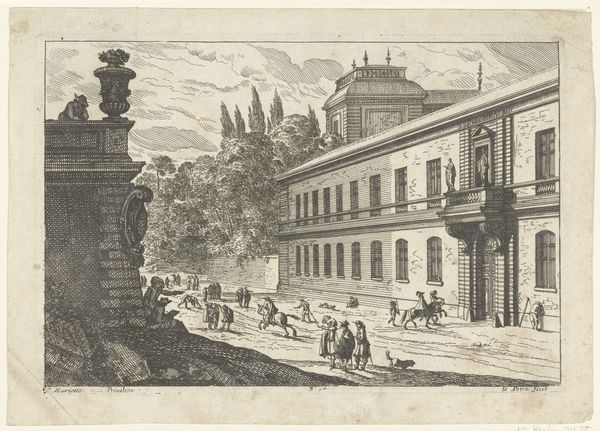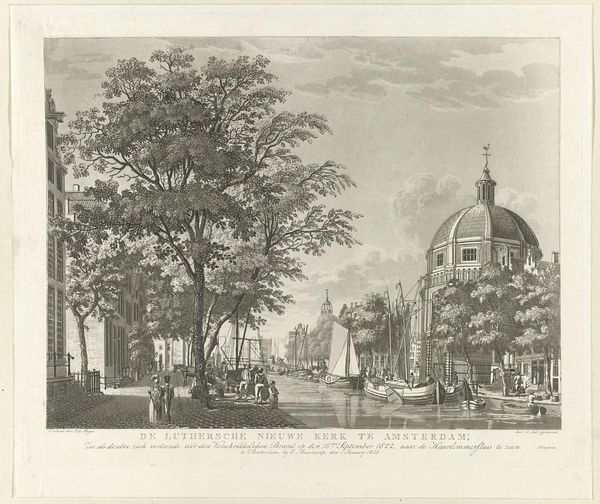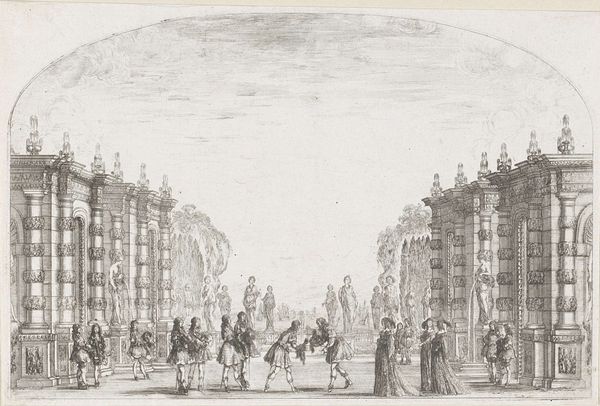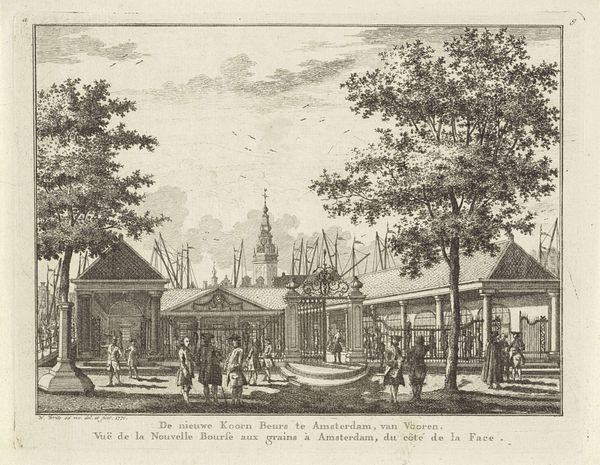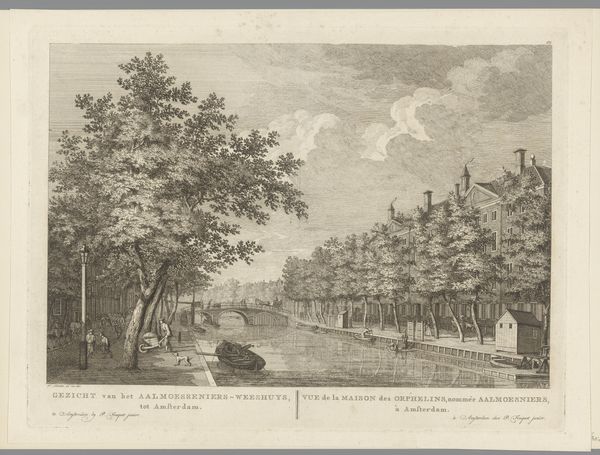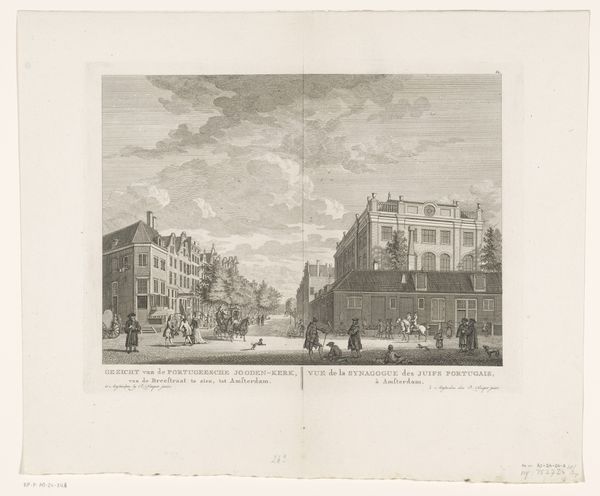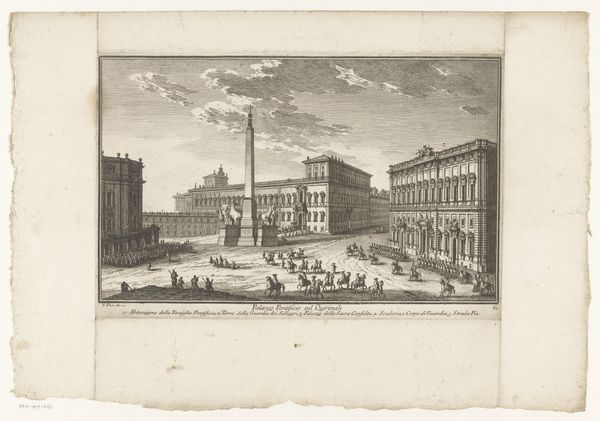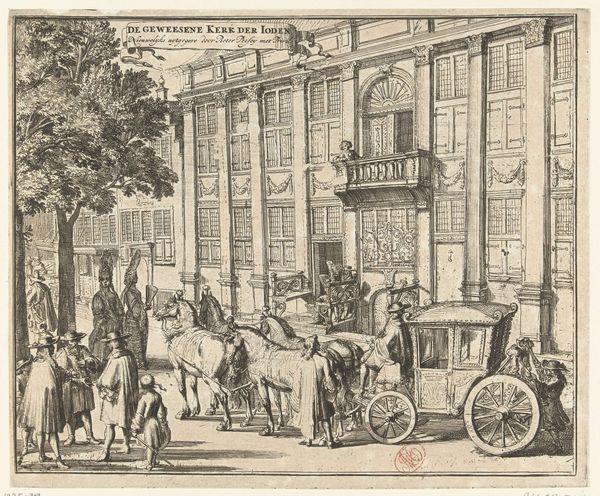
print, engraving
#
baroque
# print
#
landscape
#
cityscape
#
genre-painting
#
history-painting
#
engraving
Dimensions: height 378 mm, width 507 mm
Copyright: Rijks Museum: Open Domain
Editor: Hendrick Hondius I’s engraving, "Spring," made in 1618 and held at the Rijksmuseum, offers this incredibly detailed snapshot of a city scene. It's so meticulously rendered; almost feels like I'm peering into a little world. What's your take on it? Curator: It's fascinating how Hondius uses engraving to capture a burgeoning sense of civic pride. Notice the grand architecture juxtaposed with scenes of everyday life: people strolling, musicians playing, a gondola drifting by. This wasn't just about representing reality; it was about constructing an image of an ordered, prosperous society. How does the artist manage to bring all this in a single image? Editor: Well, there is definitely a staged effect. I mean it really does capture different spaces and places at once, especially because of how big and decorated those buildings are on the right. It gives the idea that society and life have many layers. Is that perhaps why the artwork uses the name of one of the seasons of the year? Curator: Precisely! "Spring" is not merely a description of the season. It speaks to a moment of societal awakening, an idealized vision presented for public consumption. The elite classes wanted to view their society in harmony. Consider how prints like this circulated widely. This helped to further communicate and control a certain political and social agenda, while popularizing aesthetic values. This piece provides not only social commentary on public behavior, but also hints at institutional forces at play. It speaks to the intricate web of cultural power! What about you; what are you taking away from this work? Editor: It's fascinating to think of "Spring" not just as a pretty picture, but as a strategic communication tool. I am beginning to see the power art has! Curator: Indeed! Art rarely exists in a vacuum; it's a reflection of and a participant in a much larger societal conversation.
Comments
rijksmuseum about 2 years ago
⋮
Here gaiety takes centre stage. People eat and drink, make music, court, and sail in a flower bedecked gondola. Working the land, traditionally an important element in depictions of spring, can be seen at the left. The theme has been reduced to a woman picking tulips and a young lad with a shovel on his shoulder.
Join the conversation
Join millions of artists and users on Artera today and experience the ultimate creative platform.
